Writing from Twitter
![]() Twitter debuted “Twitter for Newsrooms” on Monday as an online guide for journalists on how to best use the social networking site. It focuses on enhancing the quality of online content as well as the quick dissemination of that content to a wider audience.
Twitter debuted “Twitter for Newsrooms” on Monday as an online guide for journalists on how to best use the social networking site. It focuses on enhancing the quality of online content as well as the quick dissemination of that content to a wider audience.
I think this is a great idea. As long time readers of this blog know, I’ve been a fan of Twitter for years and I regularly use it to promote my own writing and as a forum for my alleged wit.
There’s no better way to keep track of breaking news stories. I’ve learned about dozens of trades through the Trending Topics feature and have often learned about other hot stories through Twitter. In fact, most of the feature stories I read I’ve discover through Twitter.
In other words, I’m really looking forward to exploring TfN.
Coincidentally, the Canadian Press had been using Twitter as a source for quotes for some time, taking the tweets of athletes (or politicians or whoever) from verified accounts to add colour to our news stories.
Recently, CP’s sports department has composed entire stories from these tweets, adding greater context to developing stories. I’ve written two of these articles.
The first was reactions from NHLers (and NBA star Steve Nash) on the pivotal Game 6 of the Stanley Cup final between the Vancouver Canucks and Boston Bruins.
“NHLers react on Twitter to Game 6 action”
Watching Game 6 of the Stanley Cup final brought back some emotional memories for Bret Hedican, something the retired NHL veteran was only too happy to share with the world.
Hedican was one of several NHL players, both current and retired, took to the social networking site Twitter on Monday night to weigh in on the Boston Bruins' 5-2 victory over the Vancouver Canucks.
"I've won and lost a Stanley Cup game 7!," Hedican tweeted. "I remember both like they were yesterday! Heartbreak & Elation!" (Read more…)
On Sunday we applied the same idea to the opening match of FIFA’s Women’s World Cup as Canada took on Germany.
“Soccer fans cheer on Canadian women against Germany via Twitter in World Cup”
As Christine Sinclair scored for Canada’s in its 2-1 loss to Germany at FIFA’s Women’s World Cup on Sunday, fans and players took to Twitter, often tweeting directly at the forward.
“@sincy12 That was soooo pretty! Love watching you play! Come on, 1 more!!” said Leslie Osborne, a former player with the U.S. national team and current captain of Women’s Professional Soccer’s Boston Breakers after the strike at the 82nd minute.
Despite playing most of the second half with a broken nose after taking an elbow in the face, Sinclair scored in the 82nd with a brilliant free kick to the top right corner, cutting Canada’s deficit to one and shocking the German fans. (Read more…)
I think that both articles did well to take advantage of the instant access afforded by Twitter and also allowed for more candid – if horribly written – comments from athletes who’ve been trained to clam up whenever a microphone is in front of them.
Hopefully, “Twitter for Newsrooms” helps CP and other news organizations take full advantage of social networking sites.
Where have I been?

A corner of the Canadian Press newsroom in Toronto. Not my corner though. This picture is from Centennial College's journalism blog, taken by Gesila Azorbo.
As you can see, I haven’t posted on this blog since – yikes – the middle of April.
Where has all my writing energy gone? To the Canadian Press, of course.
In early March I was taken off the junior hockey beat and bumped up to a reporter-editor on the sports desk. Since then, I’ve been working between three and six shifts a week covering anything that comes across my desk, sometimes on day shifts and sometimes at night.
There are four “spots” on the sports desk that a reporter-editor fills.
Broadcast news – Broadcast News was a separate company that for years provided television and radio stations with copy for announcers to read. The Canadian Press bought BN and eventually merged it into its main news wire service. The BN desk is still responsible for writing and editing copy primarily for our broadcast wire and taking care of audio-visual material.
This means turning around audio clips for TV and radio stations and writing what we call sportsbreaks and minutes.
You’ll hear this copy on the radio, typically on a non-sports station. Consider a classic rock station. If the DJ isn’t a big sports fan, or is too busy managing the songs on the station, they just use our sportsbreak to run down the latest sports news every hour or so. The writing is simple, brief and designed to be easily read by those unfamiliar with the pronunciation of athletes names.
For example, recent NBA playoff MVP Dirk Nowitzki would be written as “recent N-B-A playoff M-V-P Dirk Nowitzki (noh-VIHT'-skee)”.
Second chair – On the sports desk the second chair has a lot of names. “Second chair”, “second editor”, “little chair”. Generally, this editor is responsible for Canadianizing copy from the Associated Press by highlighting the accomplishments of Canadian athletes (“Toronto’s Joey Votto”) and fixing words to their Canadian spelling (dueled becomes duelled, among countless other changes).
The second chair might also write fresh copy, from box score, press release or phone interview. Most often, it’s a combination of all three. However, all that is at the discretion of the slotperson.
Slotperson – The slot is the person in charge of the desk. They dish out assignments and are the final arbiter of what is or isn’t newsworthy. The morning slotperson is the first to arrive and the evening slot is the last to leave at – God help them – 3 a.m. I haven’t had many of these shifts since I’m pretty new to the desk, but it does happen.
The slotperson does everything the second chair does, only more of it and is expected to take responsibility for the biggest story of the day, whatever it may be.
General assignment – On occasion senior reporter-editors are put on general assignment so they can pursue feature stories or develop their beat. For example, our Canadian Football League writer Dan Ralph has been preparing for the upcoming season and hockey writer Chris Johnston has been getting ready for the NHL draft. I’m not yet senior enough to do GA, but I still thought I’d mention this desk task.
All this adds up to me being a very busy guy. I’ve gone stretches with 12 shifts in 13 days.
Unfortunately, as much as I love writing, reading and editing, it’s hard to get jazzed about it when you’ve already done it for seven hours that day.
In any event, now that I’m becoming more comfortable on the desk I’ll be coming back here a lot more. I’ve got some book reviews coming up for Chapters-Indigo that I’ll cross-post here as well as some pieces specifically for this blog as well as some work for my friends over at HockeyPrimeTime.com.
Farewell Wizard
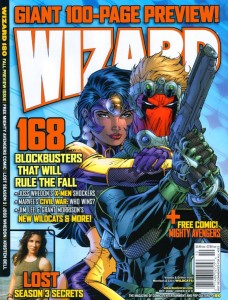 Wizard Entertainment announced on Monday that it has ceased publication of its Wizard and Toyfare magazines, bringing an end to one of the pillars of my childhood.
Wizard Entertainment announced on Monday that it has ceased publication of its Wizard and Toyfare magazines, bringing an end to one of the pillars of my childhood.
Although I hadn’t bought the magazine in years or read it in months, I’m sorry to see it go. It was a big part of my adolescence – I still have a stack of issues sitting at my dad’s – and helped shape me as both a writer and as a person.
Since 1991 Wizard has been the go-to source for most comic book fans. The monthly magazine featured news items, interviews, how-to articles, reviews, previews and just about anything else you can imagine involving comics, all in an irreverent and fun package.
It was that flippancy and sense of humour that has informed my personal and professional style. Although journalism is rarely an appropriate venue for sarcasm, it certainly has its place on this blog, on my Twitter feed, on Facebook and most especially in person.
Every so often I’m reminded of one of Wizard’s jokes or particularly funny turns of phrase and I still laugh.
For example, like the Marvel Comics of the 1980s and early 1990s, Wizard always had a page dedicated to the antics of its bullpen of staff.
In that space they often discussed the escalating prank war amongst the magazine’s different departments, including a gag where three staff members took thousands of photocopies of their faces and plastered them all over their rival’s offices. Into file folders, on computer screens, covering phones, cut into slices and taped to the individual slats of venetian blinds. Everywhere.
Years later, when my friends Wes and Ruben wanted to prank our friends Kate and Hannah, I knew just what to do. Nearly $150 at Kinko’s and hours in the girl’s apartment later, and we’d covered every square inch with black and white copies of our faces, all with the staff of Wizard as our inspiration.
But the slick magazine’s reach extended far beyond its sophomoric humour.
As Matt Demers of NerdGirlPinups.com points out “Wizard showed me that a person could take something that he/she enjoyed and make a living at it. The articles were written with passion and flair, and exposed me to the deeper side of comics' fandom.”
Basically, being a writer for Wizard was what I aspired – really, still hope - to be. It helped show me that it’s possible to make a living being creative and doing what you love.
But as much as Wizard was a positive influence on me and my work, it also served as a cautionary tale in two respects.
First, it was often criticized by comic fans and professionals alike for essentially becoming a catalogue for the industry’s two biggest publishers - Marvel Comics and DC Comics - and generally ignoring smaller or independent printing houses.
Obviously, this underscored the need not just for journalistic integrity, but to have diversity in your coverage. If you’re going to develop a beat and report on something like the comics industry, you should not neglect any corner, no matter how insignificant it may seem.
Second, despite its decidedly nerdy demographics, Wizard never really expanded on to the internet. Yes, they had a website but it never had any news or really any content beside subscription information or the details on their series of conventions.
I think this was their ultimate undoing. Wizard was in a position to get in on the ground floor of the Internet boom with a hardcore audience that would presumably be web savvy. WizardUniverse.com could’ve been ComicsAlliance nearly a decade before there was a ComicsAlliance.
Instead, publisher Gareb Shamus stuck with Wizard’s out-dated print-only business model. Ironically, they plan to launch WizardWorld.com, an online comics magazine in February, but it’s obvious to everyone that the cat is out of the bag with several competitors already well-established online.
Farewell Wizard, it’s been fun. You taught me a lot about comics, writing and journalism both in life and in death, but your time had come.
State of the Blog

I ran a Google Image Search for "website" to get this generic graphic. I was also directed to not one, but two pictures of naked women. Thanks, Internet!
A few days ago reader Badmash commented on my post "My weekend in junior hockey Oct. 8-10" to say: "I just signed up to your blogs rss feed. Will you post more on this subject?"
I already answered "Yes" to Badmash, but it reminded me that I should post a reminder of what my writing schedule looks like:
Mondays - I will be posting "My Weekend in junior hockey" articles every Monday for the duration of the Canadian Hockey League season.
Those posts have links to all of the round-ups I write and edit for the Quebec Major Junior Hockey League, the Ontario Hockey League and the Western Hockey League. I also write a small column on top that summarizes the other articles or highlights something that interested me that weekend.
For those of you unfamiliar with these posts, you can read the latest one here.
Tuesdays - Just a good ol' fashioned blog post. Today's is taken up by this site administration post, but otherwise it'd be a book review, post about sports or some other well-considered rant.
Wednesdays - Last week's Top 10 Sports Books was so popular that I've decided to make it a regular feature of this blog. Reader suggestions are welcome. The sooner the better, since this is a Tuesday and I've got no ideas for tomorrow!
Thursdays - Just like Tuesdays I'll have a regular ol' post in this spot.
Fridays - Sorry folks, this is one of my days off. I need this time to align my chi for my junior hockey work. If you want to see the results of that deep meditation then go to TSN.ca search for "QMJHL" at approximately 11 p.m., "OHL" at 1 a.m. and "WHL" the next morning at 9. (All times Eastern)
Saturdays - Don't come to this site! Instead, head over to Hockeyprimetime.com and look at the Northeast Notebook that I wrote just for you. It usually goes up late on Saturday, although sometimes it shows up late Sunday.
Also, TSN.ca will have my junior hockey work from the Canadian Press. Check out Fridays' instructions to see how to find that work.
Sundays - I'm usually somewhat zombie-ish by this point, so this is my other day of the week off. QMJHL and OHL round-ups will be available at TSN.ca at about 7 p.m. and 9:30 p.m., respectively.
Of course, for little bite-sized pieces of my writing you should start following me on Twitter. My handle is @jchidleyhill. Typically, I use Twitter to point out interesting articles I've found and spread my alleged humour around.
Research makes perfect
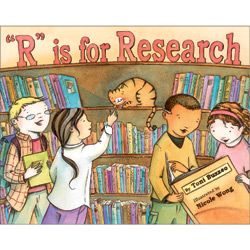 I’ll be the first to admit that I’m a rookie at this professional writing game. Indeed, if there’s one thing I’ve learned in my past year with the Canadian Press, it’s that I don’t know how much I don’t know.
I’ll be the first to admit that I’m a rookie at this professional writing game. Indeed, if there’s one thing I’ve learned in my past year with the Canadian Press, it’s that I don’t know how much I don’t know.
Sure, as a young Canadian male I’d watched more hockey than the average person. But there’s no way I’ve seen as much hockey as some of the big name experts like TSN’s Bob McKenzie and Darren Dreger of the CBC’s Scott Morrison, Don Cherry and Ron MacLean.
No, I definitely still have a lot to learn about the game and the sports journalism business in general.
The only acceptable recourse is to keep striving by working at my craft and doing research to broaden my knowledge base.
This is actually a personal belief that I’ve held for a long time. In fact, last month I was asked to speak to the current cohort at Centennial College, my sports journalism alma mater, and I made a point of talking about the importance of continuing the learning process even after school is done.
After all, sports journalists are required to interview athletes and coaches who have dedicated their whole lives to their sport. They know it inside and out. If we want to engage them and extract thoughtful quotes from them, we need to know what we’re talking about.
That’s one of the many reasons I decided to go to the World Hockey Summit. It was the ideal place to meet with hockey people at the grassroots level and learn about the issues facing the sport today. As you can tell from my four-day diary of the conference, it was an incredibly educational experience.
As I announced yesterday on my Twitter feed the Canadian Press has brought me back for another year as their junior hockey editorial assistant, and so I’m getting down to some serious research.
I’ve begun an email-writing campaign, introducing myself to all the media relations people of the Canadian Hockey League.
Whether it’s the head office here in Toronto, the regional offices of the Quebec Major Junior Hockey League and the Western Hockey League or the teams from Sydney, Nova Scotia to Prince George, British Columbia, everyone has or will hear from me.
The idea is to discover the stories behind each organization. Many of them have already sent me their media guides or are putting me on their mailing lists. Hopefully, these contacts and these press kits will help me come up with more and better feature stories and add further colour to my game stories.
Already I’ve benefitted from this initiative – this morning I was invited to listen in on the QMJHL’s season-opening press conference.
Amongst other pieces of news, league president Gilles Courteau explained that there is a gentleman’s agreement between the AHL and the Quebec-based association to not spread into New England. I was live Tweeting the call and when I mentioned that tidbit I got a big reaction from many followers.
I’m sure that all this work, all this research, will bear more fruit, I’m just not sure how. After all, I don’t know how much I don’t know. But that’s why I’m doing all this research – to try and improve myself as a journalist.
Taking Care of Business
It has been three weeks to the day since I last posted on here, and for that, I am sorry.
It just couldn't be helped though - I’ve been very busy with my continuing work at Canada’s Sports Hall of Fame. The good news is that most of my work is now done, and the final stage should be completed in about mid-July.
My work hasn’t been limited to freelancing for the Hall of Fame though. I’ve been spending the summer doing pagination for the Canadian Press, as well as a few side projects.
The first of these projects was for my friend Victor Bachmann, a professional mixed martial artist based in Edmonton. I had interviewed him years ago for a Canadian fighting magazine. Unfortunately, they never had the space for the article and its references quickly became dated.
In addition to his prizefights, Victor is a teacher at the Hayabusa Fighting Training Centre, and he needed a profile for the gym’s website. Remembering the story I’d written about him, Victor asked me to re-write it for him.
I’ve never had to re-write an article so dramatically before, but I think I really sharpened this piece up.
My other project was for HockeyPrimeTime.com, a website that covers the National Hockey League.
Their editor, J.P. Hoornstra, asked me to do a preview of the Northeast Division’s draft possibilities and I happily complied.
It was a lot of fun looking at the different needs and draft picks of the hockey teams I am most familiar with: the Boston Bruins, the Buffalo Sabres, the Montreal Canadiens, the Ottawa Senators and the Toronto Maple Leafs.
The next few weeks are all laid out for me - I’ll be doing a preview of the free agent prospects of the Northeast Division teams for HPT.com and completing my work with Canada’s Sports Hall of Fame. Fortunately, I’ll also have more time to do blog posts.
My latest work – Canada’s Sports Hall of Fame
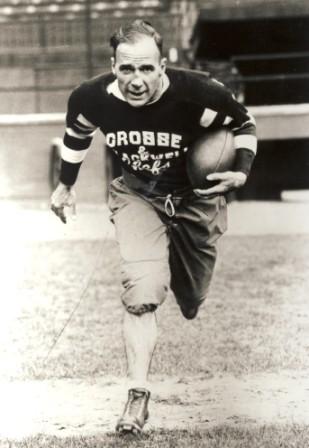
Lionel Conacher was Canada's Athlete of the Half-Century in 1950. He excelled in football, hockey, baseball, lacrosse, boxing, wrestling and many other sports.
As I mentioned about three weeks ago, I’ve been doing some freelance work for Canada’s Sports Hall of Fame.
The Hall is moving from its current home at the Canadian National Exhibition fairgrounds in Toronto to a new building at Calgary’s Olympic Park. The move itself is a long and protracted story - detailed in the final four paragraphs of this history – but it’s suffice to say that a permanent building is long overdue.
My job is to research and write the content of displays that will be installed in the galleries of the new Hall of Fame. Specifically, I am working on entries for timelines that will be incorporated into the entrance of each gallery. These chronologies will highlight the greatest moments in the history of Canadian sport.
For example, when I was trying out for this job I worked on moments for Lionel Conacher, Angela James and Jacques Plante.
Conacher’s storied career had many incredible moments but I chose to focus on June 1922. In a single day he drove in the winning runs to lead the Toronto Hillcrests to the city’s baseball championship and then he took a cab to Scarborough where he led his lacrosse team to the Ontario senior championship.
With James I focused on the period of March 19-25, 1990 when she scored 11 goals and two assists in just five games as Team Canada swept through the first-ever Women’s World Championship of Hockey.
Of course, Plante’s tale revolved around the night of November 22nd 1959 when the Montreal Canadiens were playing the New York Rangers and the all-star goaltender’s nose was broken by a shot. After that he began wearing a mask, the first National Hockey League goalie to regularly wear one.
I even added a little bit about Andy Bathgate – the man whose shot broke Plante’s nose – and that the Rangers forward had intended to hit the goalie in the face with the puck.
Now I’ve got to do another 50 moments and I couldn’t be more excited.
I’m still in the planning process of picking which athletes I want to do for this phase of the project but I am thrilled that I’ve been chosen to work with Canada’s Sports Hall of Fame.
The intersection of sports and Canadian history is like a perfect Venn diagram of my interests and I am honoured to be playing a role – no matter how small it may be - in the creation of a new monument to the great athletes of this nation
Book Review: On Writing by Stephen King
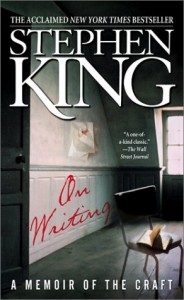 Stephen King’s On Writing is one of the best books I’ve read on how to become a writer. Not necessarily a professional scribe, but how any author can hone their craft until their work becomes readable and entertaining.
Stephen King’s On Writing is one of the best books I’ve read on how to become a writer. Not necessarily a professional scribe, but how any author can hone their craft until their work becomes readable and entertaining.
On Writing is full of King’s wit and charm as he explains how he builds his stories from the ground up. His encouraging voice is directed at fiction writers at the start of their careers, but his advice can be applied to anyone who wants to pursue their creative passion.
The book is divided into four parts: C.V., Toolbox, On Writing and then On Living.
C.V. is a short memoir that focuses on King’s life. As King says in the introduction: “This is not an autobiography. It is, rather, a kind of curriculum vitae – my attempt to show how one writer was formed,”
Some of the moments are tough to get through, particularly King’s upsetting history of drug and alcohol abuse. Fortunately, the entire section is spiked with his self-deprecating humour. Any fan of King’s work will enjoy reading this portion of the book.
Toolbox discusses the skills that every writer needs to be readable. Things like grammar, vocabulary, form and style. It’s the shortest part of the book, but still important and King, a former high school English teacher, makes it as entertaining as anyone could hope.
On Writing is the real meat of the book, where King explains how young writers should put their skills to good use. His ideas about drafting, story composition and research are all informative. In particular, I like how blue collar he is in his approach.
“[I]f you don’t want to work your ass off, you have no business trying to write well – settle back into competency and be grateful that you have even that much to fall back on,” King says in the introduction to the section.
According to King, his theories about writing and what it takes to succeed as an author are not popular with certain literary circles, but they appeal to me. Not just because it means there’s hope for the novice writer, but because I think that analyzing and honing one’s craft (whatever it may be) is the best way to succeed in any field. To see it applied to writing by one of the most widely read authors of the 20th century only confirms this.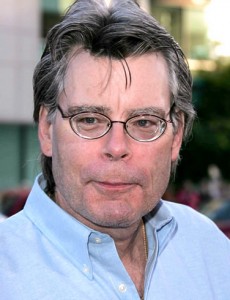
The entire tone of the book is light-hearted and informal, with King making funny asides and offering insight and commentary about his canon, as well as the work of an array of authors including Cormac McCarthy, Ernest Hemingway, Tom Wolfe, Elmore Leonard and H.P. Lovecraft.
In On Living, the book’s postscript, King recounts the events surrounding the car accident that nearly took his life during the composition of On Writing. I say ‘surrounding’ because he can’t remember the actual event – his head smashing through the oncoming windshield of a van took care of that.
It’s the most moving part of the book, and possibly the most stomach-turning writing of King’s accomplished career. His description of what happened to his body, particularly his right leg which was broken into “so many marbles in a sock”, literally had me squirming on my couch.
On Writing will appeal to two groups of people: Stephen King’s fans will be attracted to the C.V. and On Living sections where they can learn about their favourite author. Aspiring novelists will prefer the Toolbox and On Writing sections for King’s insight into his craft.
For everyone else though, it can still be a quick, fun read that will make them think twice about Stephen King and the art of writing.
What does a Junior Hockey Editorial Assistant do, exactly?
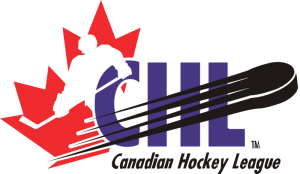 As I’ve mentioned on my bio page, I work at the Canadian Press as a Junior Hockey Editorial Assistant. (The Junior denotes the level of play, not my position.) It’s a really fun job that lets me pursue two of my loves: writing and following sports.
As I’ve mentioned on my bio page, I work at the Canadian Press as a Junior Hockey Editorial Assistant. (The Junior denotes the level of play, not my position.) It’s a really fun job that lets me pursue two of my loves: writing and following sports.
It’s also nice because at parties people get all excited about what they assume is an exciting, glamorous job.
Inevitably, they ask me how it all works. I figured I would break it down for my readers.
Every Friday and Saturday night I go to CP’s newsroom for about 9 p.m., just as the Quebec Major Junior Hockey League’s games are wrapping up.
Covering the QMJHL is very straight forward.
All I need to do is create a “round-up” from their website’s detailed game sheets. As long as no games are postponed or go to a shoot out, I can do this in an hour to an hour and a half. Here’s one I wrote on Jan. 3: QMJHL: Martel wins 222ndgame as Sagueneens beat Remparts.
As I’m finishing my QMJHL writing results from the Ontario Hockey League will begin to trickle in.
For most OHL games, CP has freelance writers on location that we call “stringers”. Stringers email in copy that I read over, format, and then put on the wire as a 150-400 word story. We also receive copy from member papers. For example, we often get material on the Kingston Frontenacs from the Kingston Whig-Standard.
Once all the stringer and members have sent in their work, I write separates for any games that didn’t have a reporter on location. Like my QMJHL round-up, I rely on the OHL’s website for my information.
When that’s all done I cobble all the OHL stories together as a round-up. Here’s an OHL overview from Jan. 3: OHL: Bulls rally from early deficit to defeat Generals.
By this point it’s around midnight and some Western Hockey League games will be done.
The WHL is tricky because it is spread over three time zones, so I have to keep my eye on the scores page of their website constantly. Often times there will be a game in Brandon, Man., or some early games in Regina or Saskatoon that will require my attention before I’m even done the OHL.
Covering the WHL ramps-up the amount of work I have to do.
Again, I rely on stringers and members to supply me with copy for separates, and I bolt it all together to make a round-up. Here’s a lengthy one from Jan. 2: WHL: Giants win chippy game against Chiefs.
An extra wrinkle in my WHL work is that I also have to create box scores for “agate”.
What’s agate? I’m glad you asked.
Agate is defined by Wikipedia as “a unit of typographical measure. It is 5.5 typographical points, or about 1/14 of an inch. [...]. An agate font was commonly used to display statistical data or legal notices in newspapers. It is considered the smallest point size that can be printed on newsprint, and then read legibly.”
In other words, when you flip to the back of your sports section and look at all the box scores and standings, you are looking at agate. The standings of all three leagues are updated in agate, but the WHL has individual box scores done in agate as well.
The WHL is the most involved of the three leagues in the Canadian Hockey League. It’s got the most teams, the most fans, and therefore requires the most coverage. In small towns like Prince Albert, Sask. or Kennewick, Wash., the WHL is the biggest show in town.
More often than not, the small arenas that host WHL games are sold out.
When all is said and done it is between 2 and 3 a.m. and I have written or edited between 16 and 18 separate game stories and put together three round-ups. That sounds like a lot, but it’s actually not so bad – typically between 2,200 and 4,000 words. The stories and agate appear across Canada, in parts of the United States, as well as on websites like TSN.ca.
